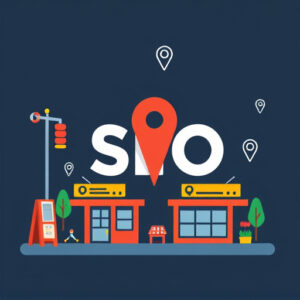Boost Local Business SEO with Natural Language Optimization Techniques
Local Business SEO is a powerful tool for boosting online visibility and connecting with geographically-focused customers. By integrating location keywords, leveraging customer reviews, and optimizing content with relevant natural language phras…….

Local Business SEO is a powerful tool for boosting online visibility and connecting with geographically-focused customers. By integrating location keywords, leveraging customer reviews, and optimizing content with relevant natural language phrases, businesses can improve search rankings on platforms like Reviewly Local Search. This enhances discoverability, drives foot traffic, and fosters engagement with local clientele. Effective strategies include analyzing search trends, creating compelling content, and utilizing tools for performance tracking.
In today’s digital landscape, enhancing visibility is paramount for local businesses aiming to thrive. Natural Language Content Optimization (NLCO) emerges as a powerful strategy to boost online presence and attract target audiences. This article delves into the intricate relationship between Local Business SEO and NLCO, exploring techniques that empower businesses to optimize content, improve search rankings, and ultimately, increase foot traffic. By understanding the impact of local SEO and leveraging the power of natural language, businesses can navigate the competitive digital realm effectively.
- Understanding Local Business SEO and its Impact on Visibility
- The Role of Natural Language in Search Engine Optimization (SEO)
- Optimizing Content for Local Search Queries
- Techniques to Improve On-Page SEO with Natural Language
- Incorporating Location-Specific Keywords Effectively
- Enhancing User Experience through Semantic Content
- Measuring Success: Analyzing Content Performance for Local Businesses
Understanding Local Business SEO and its Impact on Visibility
Local Business SEO plays a pivotal role in enhancing a company’s online visibility, particularly within its geographic reach. It involves optimizing digital content to rank higher in local search results, ensuring that potential customers can easily discover and engage with local businesses. By implementing strategic techniques, such as incorporating location-specific keywords into website copy and leveraging customer reviews, businesses can significantly improve their Local Business SEO.
Reviewly Local Search offers a comprehensive platform to learn more about these strategies and put them into practice. Visiting Reviewly Local Search provides direct access to tools and insights that demonstrate the impact of Local Business SEO. You will see how optimizing content for local search not only boosts online visibility but also fosters genuine connections with customers who are seeking products or services in their area.
The Role of Natural Language in Search Engine Optimization (SEO)
In today’s digital age, natural language plays a pivotal role in shaping how search engines understand and index content. This is particularly crucial for local businesses aiming to enhance their online visibility. When consumers search for services or products using terms like “best nearby restaurants” or “local auto repair shops,” search engines utilize natural language processing (NLP) algorithms to interpret the intent behind these queries. By optimizing content with relevant keywords, phrases, and contextual information that closely mirror how people actually speak and search, local businesses can significantly improve their Search Engine Optimization (SEO).
For instance, a bakery in a bustling neighborhood might incorporate terms like “freshly baked goods,” “local treats,” or “best breakfast spots” into its website content. This not only attracts customers searching for these phrases but also helps search engines understand the business’s focus and location. Visiting platforms like Reviewly Local Search can provide insights on how to effectively integrate such keywords, making it easier for potential patrons to find the bakery both online and in person. By staying attuned to natural language trends and adapting content accordingly, local businesses can boost their rankings and drive more foot traffic through enhanced Local Business SEO.
Optimizing Content for Local Search Queries
To enhance visibility for local businesses in today’s digital era, content optimization plays a pivotal role. A key aspect is tailoring content to cater to local search queries, as this is how potential customers often discover and engage with nearby services. By incorporating location-specific keywords and phrases into your website copy, blog posts, and online listings, you signal to search engines that your business is locally relevant.
For instance, consider targeting terms like “best [service] near me” or specific neighborhood names. Reviewly Local Search can provide valuable insights into these trends, helping you understand what locals are searching for. Additionally, ensuring consistent NAP (Name, Address, Phone number) information across all online platforms is crucial for Local Business SEO. Contact us at +61 429 021 376 or learn more at Reviewly Local Search to dial into these strategies and elevate your local search rankings.
Techniques to Improve On-Page SEO with Natural Language
To enhance the on-page SEO for a local business using natural language content optimization, start by incorporating relevant keywords into your website’s core elements. This includes the page title, headings, and meta descriptions. Make sure your titles are compelling and include location-specific terms that potential customers might search for, like “Local Business SEO services in [City]”. Using tools to analyze search trends can help identify these keywords effectively.
Additionally, natural language optimization involves creating content that reads fluently and organically while still packing a semantic punch. Write descriptive subheadings, use bullet points to highlight key benefits, and include calls-to-action (CTAs) like “Get hold of us at +61 429 021 376” or “Come and see us at Reviewly Local Search” strategically throughout the content. Ensure each paragraph focuses on a single idea, making it easier for search engines to understand your content’s context. By integrating these techniques, you can significantly improve your Local Business SEO efforts through natural language optimization.
Incorporating Location-Specific Keywords Effectively
Incorporating location-specific keywords is a powerful strategy within Local Business SEO to boost visibility. When crafting content, it’s essential to weave in terms that reflect your business’s geographical focus naturally and contextually. For instance, if your local bakery specializes in artisanal loaves, phrases like “best artisan bread in [City Name]” or “local bakeries near me” can effectively signal search engines about your niche and location. This ensures that when potential customers search for fresh, locally-made bread options, your bakery’s online presence rises to the top.
Remember, the key is to integrate these keywords seamlessly into compelling content that resonates with your target audience. Don’t simply stuff them in; instead, create engaging, informative pieces that answer local queries. For example, a blog post on “Top 5 Hidden Gems for Breakfast in [City Name]” not only includes relevant location-based keywords but also offers valuable insights to customers. You can even encourage user engagement by prompting reviews at platforms like Reviewly Local Search and direct visitors to call you at +61 429 021 376 for personalized recommendations, further solidifying your local business’s online presence.
Enhancing User Experience through Semantic Content
In today’s digital era, enhancing user experience through semantic content is a game-changer for local businesses looking to boost their Local Business SEO. By focusing on creating content that aligns with users’ search intent and semantic queries, businesses can significantly improve their online visibility. This involves understanding the context, meaning, and related terms behind searches, ensuring that the content provides genuine value and answers customer questions effectively.
At Reviewly Local Search, we recognize the power of semantic content optimization. When you come and see us at Reviewly Local Search, our team delves into your business’s unique needs and creates tailored content strategies. Whether it’s through blog posts, product descriptions, or service pages, we integrate relevant keywords naturally to make your content discoverable. Even if users dial us at +61 429 021 376 with specific queries, our optimized content ensures that your business remains a top result, providing a seamless and engaging user experience from the get-go.
Measuring Success: Analyzing Content Performance for Local Businesses
Measuring success in Local Business SEO involves a deep dive into content performance metrics. By analyzing key indicators like click-through rates, time on page, and bounce rates, businesses can gain valuable insights into what’s resonating with their audience. Tools like Google Analytics and Search Console become indispensable allies, offering data-driven perspectives on how customers interact with online content.
For local businesses, understanding foot traffic—both literal and digital—is crucial. You will find us at Reviewly Local Search, where we help optimize content to drive more of this valuable interaction. By coming and seeing us at Reviewly Local Search, you’ll discover strategies tailored to elevate your online visibility locally. You will see us at Reviewly Local Search as a reliable partner in navigating the complex landscape of local SEO, ensuring your business stands out amidst the competition.
By leveraging natural language content optimization, local businesses can significantly enhance their visibility and attract more customers. Understanding the impact of Local Business SEO and incorporating strategies like optimizing for local search queries, effective keyword usage, and semantic content, businesses can improve on-page SEO and create a better user experience. Regularly analyzing content performance allows for data-driven decisions, ensuring continuous improvement and staying ahead in the competitive local market.







